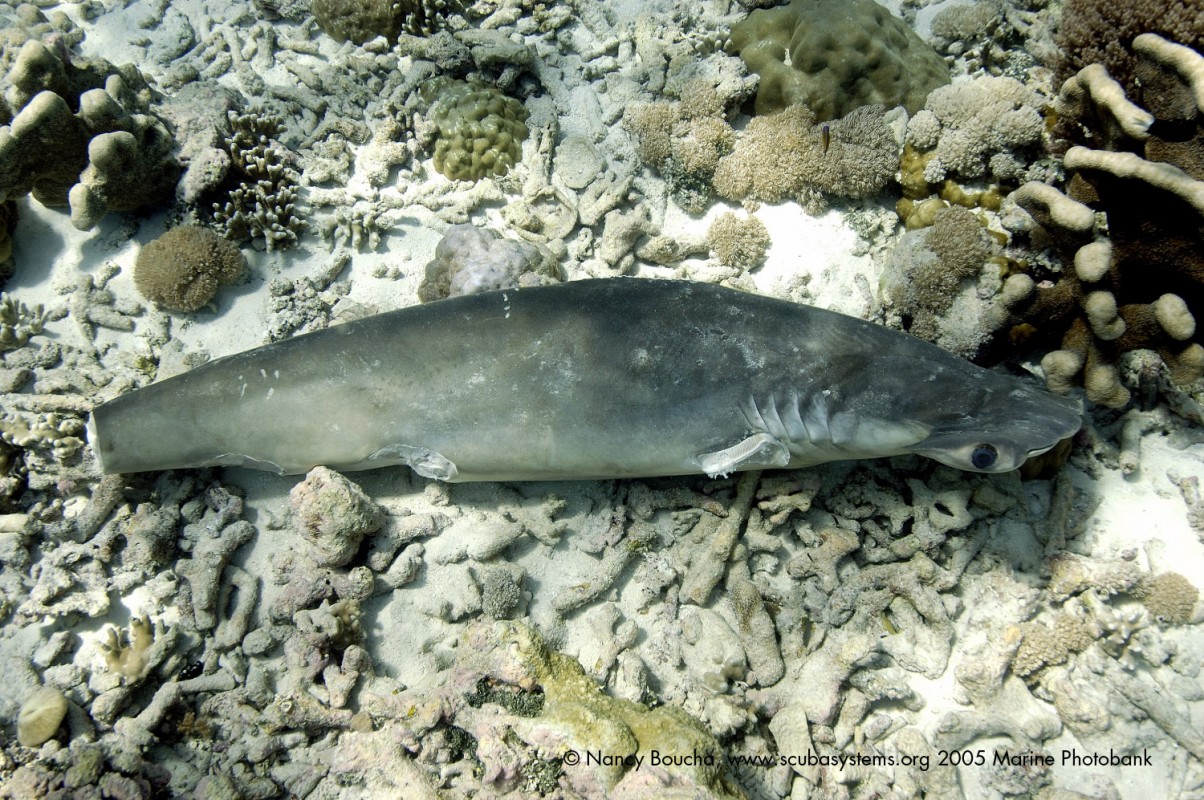Shark Finning – Your Questions Answered

Scuba divers are swimming to end finning as part of the Project AWARE Finathon, a year-round fundraising challenge, showing they are FINatical about protecting sharks. Their fundraising efforts are helping us Fight, Insist, Negotiate for the protection of threatened shark species.
As you show your support for shark conservation, your friends and family may ask you why sharks need protecting. I caught up with Ania Budziak, Associate Director of Science and Policy to help get you started with probably the most emotional issue when it comes to shark conservation- finning.
Q: What is finning?
Finning is usually defined as cutting off a shark’s fins and throwing the rest of the body back to the sea. I think it might be more illustrative to explain what finning is not. When you see fishers separating the fins from the body after the shark has been landed on the beach or in port, you’re not looking at finning – it’s fish processing. It is widely acknowledged that shark finning is associated with unacceptably high numbers of animals killed and unacceptable levels of waste. The cruelty and the gruesome imagery of finning that we see add another dimension to this “unacceptable fishing practice.”
Q: Given all that, what’s the best way to ensure that finning isn’t happening?
Implement loophole free and enforceable fins naturally attached rules where fishers must keep all sharks fins attached to the body until the sharks are brought to and unloaded on land.
Finning has been banned by many countries - close to 70 including those of the European Union - and for most international waters through regional fishery bodies, but still occurs legally in many places. In addition, the standards used to monitor compliance with finning bans vary quite a bit and weak standards hamper finning ban enforcement. Initially, most finning bans were enforced using complicated fins to carcass weight ratios, but ratios are well documented as inadequate and problematic. So, in the past decade or so, there has been an increasing push for fins naturally attached as a far more reliable, efficient and cheaper method to ensure finning isn’t happening. This method has been mandated in the United States (for all but dusky smoothhound sharks), the European Union, Taiwan, India, Sri Lanka, parts of Australia, most of Central America, much of South America, and elsewhere; and is gaining acceptance in international arenas. Yet, the work is far from over as resistance to fins naturally attached policies with no exceptions remains as evidenced in the most recent public comment we’ve submitted with our partners on the implementation of the New Zealand finning ban.
Q: Why is the fins naturally attached approach important?
Shark fishery and policy experts repeatedly agree that fins attached rules are the most reliable means for enforcing shark finning bans – complete prohibitions of the removal of fins on-board vessels. Studies and reports reiterate that the “only fail-safe, most reliable, least expensive means to prevent finning and measure compliance.” Loophole free, fins naturally attached policies:
- simplify enforcement – minimal, if any really, training and time is required to verify if a shark has all of its fins naturally attached when its landed,
- make it much easier to count the number of animals and identify the species thus helping collect information vital to meaningful fishery management,
- prevent mixing of bodies and fins from different animals to inflate the value of a potentially less valuable catch (a practice referred to as “high-grading”),
- can increase the value of the final fishery product.
Q: What role do fins naturally attached rules play in saving sharks?
Loophole free and properly enforced fins attached rules are a critical tool in the shark management toolbox. As I said, they prevent waste, make cheating difficult, and allow for species identification. But they alone will not save sharks. We need catch limits, science based management, and full protections for the most vulnerable species to ensure the survival of sharks and, let’s not forget that, the same applies to sharks’ close relatives - the rays - as well.
Q: Is there such a thing as a legal shark fin?
Absolutely. When sharks are caught without breaking laws about finning and/or species-specific prohibitions, be it in a managed or an unmanaged fishery, sale of the fins is legal - provided that sale hasn’t been banned at the point of sale. For example, a reasonably healthy spiny dogfish shark population supports the largest shark fishery in the US, which is subject to science-based quotas, as well as state and federal bans on finning. Conversely, US catches of Atlantic smooth dogfish or smoothhound shark are not yet regulated and state finning bans applied to this one species are among the weakest in the world. Both species are exempt from the existing Atlantic state fin bans, so sale of their fins – even though one is well managed and one is barely managed -- is legal. What we need is meaningful, appropriately scaled, fishery management wherever and whenever sharks and rays are caught: fisheries where the numbers of animals caught are limited, finning doesn’t occur, and bycatch is minimized.
Q: What can I do to help?
If you choose to eat seafood, make verifiably sustainable choices. Use seafood guides that consider the level of shark and ray bycatch in their evaluation process. Speak to your friends and family about the plight of sharks and rays, why it’s important to protect them, and the ways it can be done. And of course, let’s not forget one of the most powerful ways you can help - donate or fundraise for shark and ray conservation!
Interested in finding out more check out the AWARE Shark Conservation Distinctive Specialty for information about major threats contributing to declines in shark populations.
To join the Finathon and start swimming to end finning visit www.finathon.org
Image: Copyright Nancy Boucha



